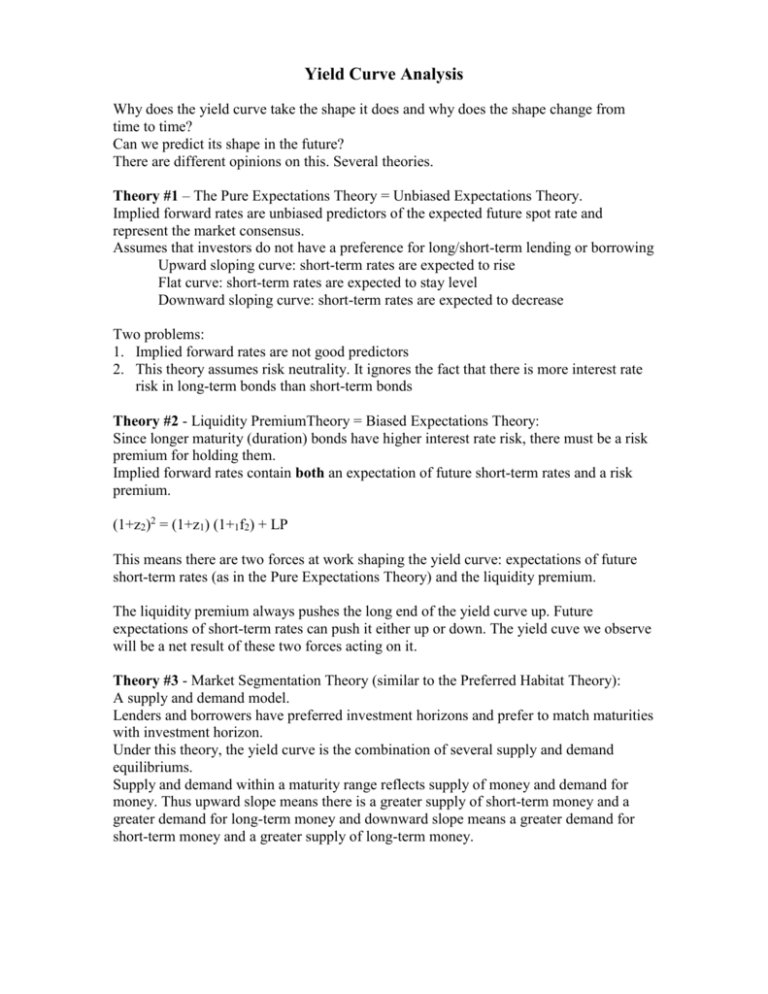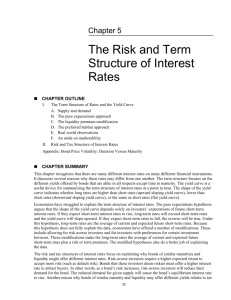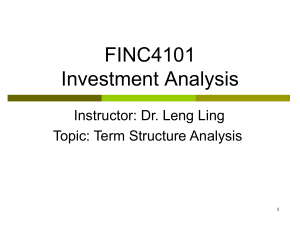Yield Curve Analysis
advertisement

Yield Curve Analysis Why does the yield curve take the shape it does and why does the shape change from time to time? Can we predict its shape in the future? There are different opinions on this. Several theories. Theory #1 – The Pure Expectations Theory = Unbiased Expectations Theory. Implied forward rates are unbiased predictors of the expected future spot rate and represent the market consensus. Assumes that investors do not have a preference for long/short-term lending or borrowing Upward sloping curve: short-term rates are expected to rise Flat curve: short-term rates are expected to stay level Downward sloping curve: short-term rates are expected to decrease Two problems: 1. Implied forward rates are not good predictors 2. This theory assumes risk neutrality. It ignores the fact that there is more interest rate risk in long-term bonds than short-term bonds Theory #2 - Liquidity PremiumTheory = Biased Expectations Theory: Since longer maturity (duration) bonds have higher interest rate risk, there must be a risk premium for holding them. Implied forward rates contain both an expectation of future short-term rates and a risk premium. (1+z2)2 = (1+z1) (1+1f2) + LP This means there are two forces at work shaping the yield curve: expectations of future short-term rates (as in the Pure Expectations Theory) and the liquidity premium. The liquidity premium always pushes the long end of the yield curve up. Future expectations of short-term rates can push it either up or down. The yield cuve we observe will be a net result of these two forces acting on it. Theory #3 - Market Segmentation Theory (similar to the Preferred Habitat Theory): A supply and demand model. Lenders and borrowers have preferred investment horizons and prefer to match maturities with investment horizon. Under this theory, the yield curve is the combination of several supply and demand equilibriums. Supply and demand within a maturity range reflects supply of money and demand for money. Thus upward slope means there is a greater supply of short-term money and a greater demand for long-term money and downward slope means a greater demand for short-term money and a greater supply of long-term money.










